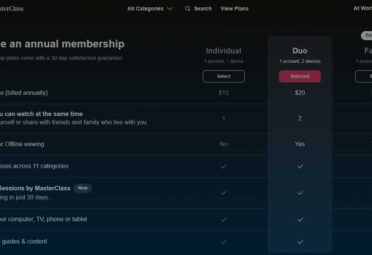Bookmap Trading Review for 2022

Transparency: If you click on the links on this page, we might get compensated. See our full affiliate disclosure here.
Disclaimer: This article is written for informational or entertainment purposes only. It is based on our opinion formed through our own experience, research, and testing of our team. While we might get compensated from link clicks on this page, the compensation does not affect how we rate them. The authors of LegitVerified are not certified financial professionals. You should consult a financial professional before making financial decisions.
The software provided by Bookmap allows users to place orders for stocks, ETFs, futures, and currencies. However, users must have an API link and brokerage account before using the platform to trade. In addition, some of these assets require a subscription and a paid subscription to trade. Nevertheless, users can easily place orders with the software by following simple steps. First, download the Bookmap software and obtain a license key.
Heatmap
The Bookmap keeps records of the size of the order book at each price level and displays these values as a grey or color shade. When a price level goes out of range, the Bookmap displays the last known size of the order book. This gives traders a good idea of market depth and the time that a dynamic range could last. To view the volume of an active range, the user can set cutoff values to display price levels that are within or outside of the range.
The volume bars on the Bookmap are a good way to get an idea of the volume of the market. Each bar represents an aggregate volume over some time equivalent to its width. The width and zoom level will change the period that is displayed. The volume bars can help users gauge the size of executions, the price, and the aggressiveness of a trade. However, this is not a perfect way to analyze the volume of an entire market.
The Bookmap has several options to make drawing easier. First, users can choose how to display a heatmap by selecting different levels. Then, users can also set the color of the candlesticks. This will help traders focus on the more liquid levels. The heatmap can be customized to display different levels of price. Users can set custom colors for all Bookmap elements using the Color Settings feature. They can select any color that is available on their computer screen. Once the users have chosen the color, they can save it as a color profile. The colors can also be restored to their default values if desired.
Spread lines
To customize your Bookmap, first select a time range for the chart. You can define the range by clicking on the time slice icon at the chart’s top. This option controls the chart’s pace and lets you specify the time range manually. You can deactivate the time slice icon when zooming in or out. Spread lines, however, are automatically calculated by default. In addition to time slices, Bookmap also lets you manually select the colors for the bubbles.
Bookmap is best used in a highly liquid market. This means that you should look for data from exchanges that are highly liquid. The Binance exchange is one of those exchanges. With Binance, you will find more liquidity than on the NYSE or NASDAQ. This means that the Bookmap will give you more accurate and consistent predictions of price movements. It is also easier to analyze market trends since you can zoom in and out easily.
If you’re looking for a major supply breach, you’ll want to look at a stock’s price behavior. When large orders are absorbed, they often turn into support or resistance. This means you’ll be able to enter at the right time. You’ll also want to watch for price reactions after the large order has been absorbed. In many cases, these can turn into support or resistance when retested.
Bid/ask volume bubbles.
One way to trade with the Bookmap is by following the Bid/Ask volume bubbles. You can spot a potential inflection point if 60 percent of all bubbles on the Bookmap are red. This indicates aggressive selling across the structure of accumulation, yet the price is still making higher highs and demonstrating overall participation by stronger buyers. For example, if there are more than a hundred bids on a particular stock, the volume of the last ten bids should be at least 100.
The volume delta between the bid/ask volumes is shown under each transactional bubble. To identify the volume delta, click the red volume next to each transactional bubble. A green volume means that the volume has increased. This is a good sign because it suggests that the market is moving higher. However, the stock price could be pushed lower if liquidity is slim. In this case, the bid/ask volume bubbles may not be visible due to a lack of liquidity.
The volume bubbles in the Bookmap are deeper than volume bars. They show the volume of buying and selling inside the bid and ask. Users can see how buyers overwhelm sellers by zooming in and out of the bubbles. You can also see individual trades and millisecond time frames. The Bookmap lets you zoom in on volume bubbles to see more details about each trade. This is an essential part of trading in the Bookmap.
Order limit order book
A Bookmap of order limit order book is an indicator of market depth. This indicator allows traders and quants to identify support and resistance levels based on order book data. Some of the features of Bookmap include:
While most traders ignore the Bookmap, it is an important indicator of the size of the market. Extreme liquidity can cause aggressive selling to have difficulty penetrating extreme liquidity on the Buy and Bid Icebergs. This can create a perfect environment for aggressive buyers to push the market back up. The Bookmap includes an on-chart absorption indicator showing large resting limits or high volumes of aggressors.
Another feature of Bookmap is that it supports trailing stops on the server side. This means that a trader’s trailing stop instructions are stored on the broker’s server instead of on the client side. However, some Bookmap APIs do not support server-side trailing stops. As a result, when a Bookmap becomes unavailable, the trailing stop instructions will be lost. Therefore, it’s a good idea to use caution when using client-side brackets.
A Bookmap of order limit order books has been designed for traders who want to see historical order data without having to open an account. This indicator lets users see order volumes on a chart and adjust the volume dots. The chart also includes a replay mode, which enables traders to study the order book’s development over time. Unfortunately, the charting tools currently available have several shortcomings. The current charts give traders a filtered and aggregated view of market activity, and the Bookmap is no exception.
Custom indicators
Using custom indicators on your order book can help you understand market dynamics. Bookmap’s developers have mastered High-Frequency Trading and developed indicators that can be easily configured. These indicators include the Iceberg Detector, Advanced Volume Delta, and Imbalance Indicator. You can also access them in its learning resources. They are the Rolls Royce of market depth indicators. Unlike NinjaTrader’s default indicator, Bookmap’s indicators are completely customizable.
The CreateOnlineValueCalculator method is used to calculate indicator values in real-time. This method must react to incremental updates to the values and recompute the last value as needed. You can choose to display more than one indicator in one chart using the same method. Depending on your preferences, you can customize the colors of the indicators with different methods. This way, you can make your chart look like a dashboard without the need to open a separate window every time you want to view information.
Another feature of Bookmap is its ability to display different types of charts. You can select a scalable time frame and zoom in as much as nanoseconds. The charts help you view order flow data, volume, and more. At first, the number of options is overwhelming. To simplify the process, start with a candlestick chart. Add one indicator at a time and then stack them. You will eventually want to use several indicators for optimal performance.
Trading with just a single click
To trade effectively with Bookmap, you must first know how it works. This tool is designed to show you the changes in the bid and ask prices. It shows you if a big order is acting as support or resistance. After the large order is absorbed, the price will usually react to the level. Sometimes, a big order becomes a support or resistance level when retested. In such a scenario, you must be able to spot the trend quickly and make your entry and exit decisions.
The Bookmap platform has several features that can be used for live trading. For example, you can use your brokerage account to connect to Bookmap. Next, you need to add data providers to connect to your platform. To do this, click on the “Connectivity” button and enter your credentials. Then, choose the symbols you want to follow and connect them. You can even watch a video to learn how to connect to data feeds. Once you’ve added data sources, you can view a heat map of the market’s liquidity. It also shows the most active blogs, which can help you find better entries.
The Bookmap software also makes it easier to identify trading opportunities during major supply breaches. The system’s technology enables traders to view all the possible trading opportunities within minutes. Most click trading actions occur when the trader presses their mouse button. This saves dozens of milliseconds when executing orders. In addition to identifying major supply breaches, Bookmap also shows the instant follow-through of microtransactions.



